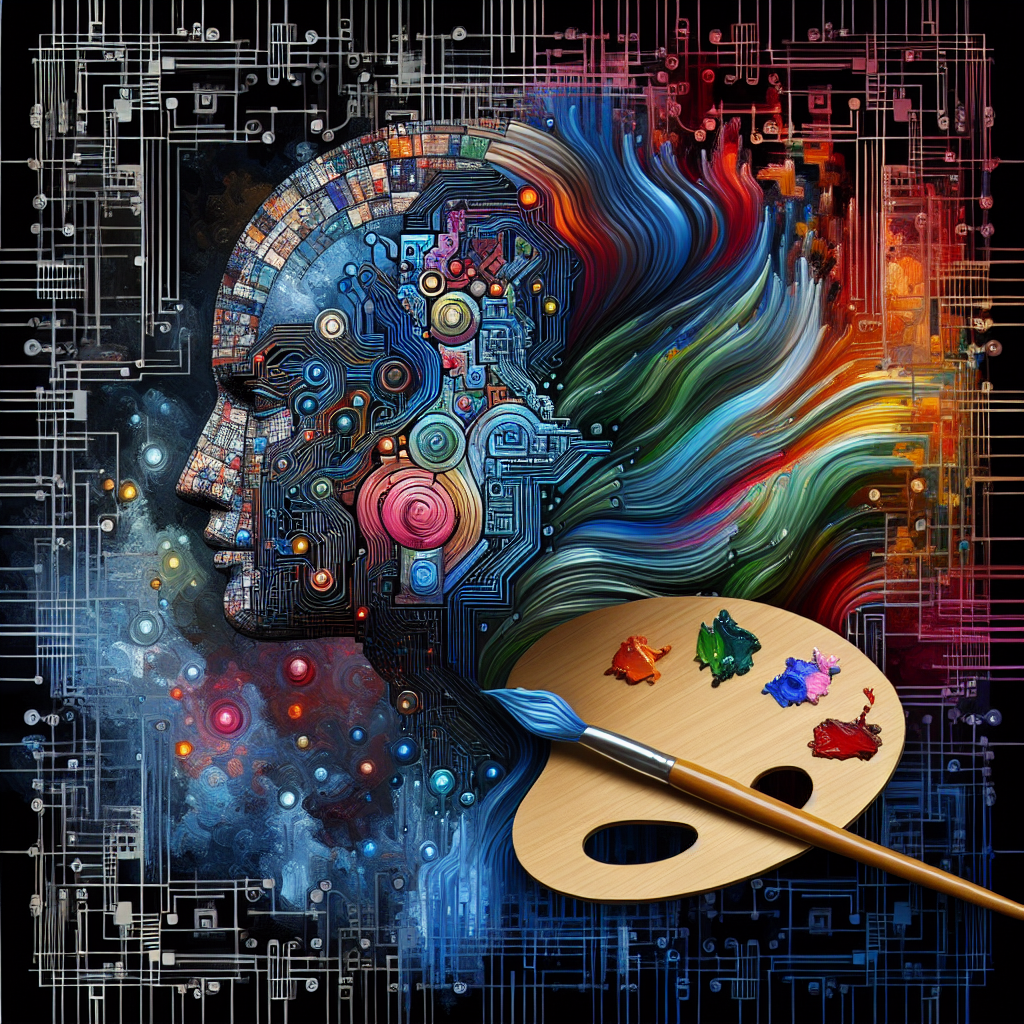Artificial Intelligence (AI) has been making waves across various industries, and the visual arts sector is no exception. From generating digital paintings to assisting artists in their creative process, AI has the potential to revolutionize the way we perceive and create art. In this article, we will explore the role of AI in visual arts and how it can enhance the creative vision of artists.
AI in the Visual Arts: A Brief Overview
AI in the visual arts refers to the use of artificial intelligence technologies, such as machine learning and computer vision, to create, analyze, and interpret visual content. These technologies have been applied in various ways, from generating artwork to assisting artists in their creative process.
One of the most well-known applications of AI in the visual arts is the creation of digital paintings. AI algorithms can analyze existing artworks and generate new images based on the patterns and styles they have learned. This has led to the creation of stunning, surreal artworks that push the boundaries of traditional art forms.
AI can also assist artists in their creative process by providing them with new tools and techniques to explore. For example, AI-powered software can help artists generate ideas, suggest color palettes, and even create rough sketches based on their input. This can streamline the creative process and help artists overcome creative blocks.
Furthermore, AI can be used to analyze and interpret visual content, helping artists better understand the aesthetics and composition of their work. By analyzing patterns in existing artworks, AI algorithms can provide insights into what makes a piece of art visually appealing and help artists improve their own work.
Overall, AI has the potential to revolutionize the visual arts by providing artists with new tools, techniques, and insights to enhance their creative vision.
AI in Action: Examples of AI in Visual Arts
There are several examples of AI being used in the visual arts to create stunning and innovative artworks. One such example is the work of artist Mario Klingemann, who uses AI algorithms to generate digital paintings that blur the lines between human and machine creativity. Klingemann’s artworks have been exhibited in galleries around the world and have garnered critical acclaim for their surreal and thought-provoking nature.
Another example is the use of AI in photography. AI-powered software can analyze images and enhance them by adjusting colors, lighting, and composition. This can help photographers improve their work and achieve the desired aesthetic more easily.
AI has also been used to create interactive art installations that respond to the viewer’s movements and emotions. These installations use computer vision algorithms to track the viewer’s movements and generate visual effects in real-time, creating a dynamic and immersive experience.
Overall, these examples demonstrate the potential of AI to push the boundaries of traditional art forms and create new and exciting possibilities for artists.
FAQs:
Q: Can AI replace human creativity in the visual arts?
A: While AI can generate artworks and assist artists in their creative process, it cannot replace human creativity. Art is a deeply personal and emotional expression of the human experience, and AI lacks the ability to truly understand and convey these complex emotions. Instead, AI should be seen as a tool to enhance and complement human creativity, rather than replace it.
Q: How can artists incorporate AI into their creative process?
A: Artists can incorporate AI into their creative process by experimenting with AI-powered software and tools. For example, they can use AI algorithms to generate ideas, suggest color palettes, and create rough sketches based on their input. Artists can also collaborate with AI experts to explore new ways of incorporating AI into their work and pushing the boundaries of traditional art forms.
Q: Are there ethical considerations when using AI in the visual arts?
A: There are ethical considerations to take into account when using AI in the visual arts. For example, there are concerns about the ownership and copyright of artworks generated by AI algorithms. Artists should be transparent about the use of AI in their work and give credit to the AI algorithms that have contributed to the creation of their artworks. Additionally, artists should be mindful of the potential biases in AI algorithms and ensure that their work does not perpetuate harmful stereotypes or discrimination.
Q: What is the future of AI in the visual arts?
A: The future of AI in the visual arts is exciting and full of possibilities. As AI technologies continue to advance, we can expect to see new and innovative applications of AI in the visual arts. From creating interactive art installations to assisting artists in their creative process, AI has the potential to revolutionize the way we perceive and create art. Artists and AI experts should continue to collaborate and explore new ways of incorporating AI into the visual arts to push the boundaries of traditional art forms and create new and exciting possibilities for artists and audiences alike.

